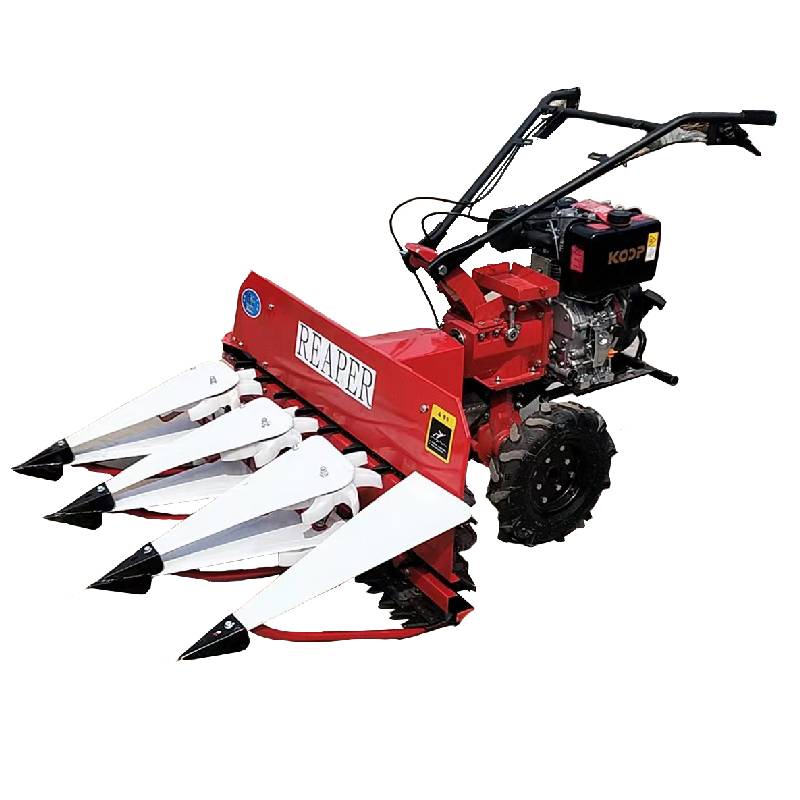reaperbinder: Efficient 4-Wheel Automatic Reaper Binder
Mini Tiller Mounted Reaper Head: field notes, specs, and what buyers keep asking me
If you’ve ever chased the harvest window with a micro-cultivator, you already know why the humble reaperbinder head matters. On small plots and terraced fields, it’s the difference between “done by sunset” and “still cutting tomorrow.” This Mini tiller mounted reaper head (Microcultivator cutter head GW100C2 i) comes out of Julu Industrial Park, Xingtai City, Hebei Province, China—an area that’s quietly become a serious machining cluster. I’ve walked a few lines there; the shop-floor smell of gear oil and powder coat is unmistakable.

What’s changing in the field
Two big trends: micro-mechanization and flexible attachments. Labor is tight, fuel isn’t cheap, and farmers want a head that clips wheat or paddy quickly, windrows neatly, and—if needed—accepts a binding module later. Actually, a lot of cooperatives prefer modularity to keep maintenance simple and costs down. It seems that attachments that fit 5–8 hp tillers are winning, especially in Asia’s smallholder belts.
Core specs (real-world oriented)
| Item | Spec (≈, may vary in field) |
|---|---|
| Model | GW100C2 i, Mini tiller mounted reaper head |
| Cutting width | ≈ 1000 mm (ideal for narrow rows/terraces) |
| Compatible power | 5–8 hp mini tillers, belt/gearbox coupling options |
| Blade material | 65Mn spring steel, heat-treated (HRC ≈ 50–55) |
| Typical travel speed | 2–3 km/h (crop density dependent) |
| Crops | Wheat, rice, barley, oats at maturity |
| Service life | ≈ 800–1200 hr with routine lubrication and guard checks |
How it’s built and tested
Materials: cold-rolled plate for guards, 45# steel shafts, and 65Mn for cutter sections. Methods: laser cut blanks, CNC punching of guards, induction hardening on blade edges, then powder coating (actually helps in muddy paddy). Balancing is done on the reel/drive to reduce vibration.
Testing and standards: Rockwell hardness checks per ISO 6508-1, safety signage per ISO 11684, and design aligned with ISO 4254-1 concepts for agricultural machinery safety. Internal durability rigs run dust/mud exposure cycles; sample noise at operator’s ear landed around 82–88 dB(A) in light wheat—your mileage will vary with engine brand and muffler condition.
Where it shines
- Small plots and fragmented land where big combine headers can’t turn.
- Hilly villages, orchard inter-rows, demo farms, and rental fleets.
- Quick salvage after lodging; the guard design helps lift tangled straw.
One cooperative in Hebei told me they cut an extra 4–6 mu before sundown by switching from hand sickles to a reaperbinder head—fuel went up a bit, but labor fatigue dropped sharply. Another dealer said customers appreciated the simple belt tensioning—less tinkering mid-harvest.
Vendor snapshot: how this stack up
| Vendor | Strengths | Watch-outs |
|---|---|---|
| Hebei maker (this unit) | Solid blade hardness, simple mounting kits, parts availability | Finish may show transport scuffs; request extra guard stock |
| Local OEM A | Aggressive pricing, broad dealer network | Mixed QC; blades lose edge faster in sandy soil |
| Import Brand B | Premium paint, low vibration | Higher cost; spares lead time during peak season |
Customization and compliance
- Options: serrated vs. smooth blade sets, crop lifters, anti-wrap guards, branding color.
- Mounting kits: brackets for popular 5–8 hp tillers; send hub/shaft photos to match.
- Certs: factory typically runs ISO 9001 QMS; CE self-declaration for machinery is available—ask for DoC and risk assessment files.
In short, if you need a compact reaperbinder head for rice-wheat rotations, this one checks the main boxes: serviceable, parts on hand, and no drama during peak season—assuming you grease on schedule and keep belt tension honest.
Quick process flow
Materials in → laser/punch → heat treat (HRC check) → dynamic balance → powder coat → assembly → run-in test → packaging with spare knives. QC records are retained per lot; field failures (if any) usually trace back to missed lubrication or rock strikes—fairly normal for a reaperbinder head.
Authoritative references
- ISO 4254-1:2013 Agricultural machinery—Safety. https://www.iso.org/standard/60662.html
- ISO 11684:1995 Tractors and machinery for agriculture—Safety signs and hazard pictorials. https://www.iso.org/standard/22120.html
- ISO 6508-1:2016 Metallic materials—Rockwell hardness test. https://www.iso.org/standard/69164.html
- FAO: Agricultural mechanization for smallholders. https://www.fao.org/3/i5259e/i5259e.pdf
Latest news
-
Combine Mini Harvester: Efficient, Affordable Harvesting Solutions for Small FarmsNewsNov.19,2025
-
Combine Harvester Small Size - Efficient & Sustainable Farming SolutionsNewsNov.19,2025
-
Efficient and Compact Combine Harvester Small for Modern Farming NeedsNewsNov.18,2025
-
Mini Wheat Harvester - Compact & Efficient Farming Solutions for SmallholdersNewsNov.18,2025
-
Small Harvester – Affordable, Efficient Machines Transforming Farming & ForestryNewsNov.18,2025
-
Small Wheat Harvester – Efficient Mechanization for Smallholder Farms WorldwideNewsNov.17,2025








